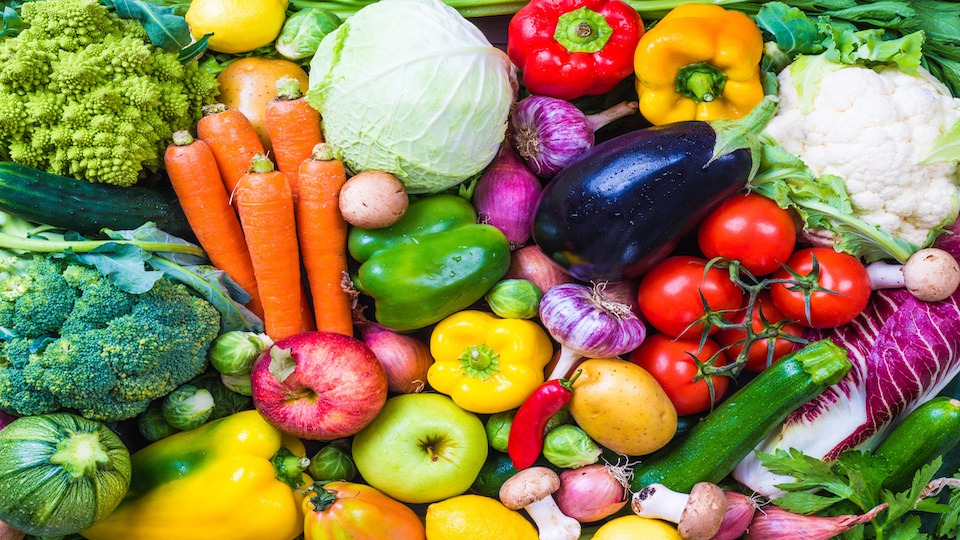Here at UpWellness, we’re more interested in providing practical and sustainable advice than jumping on the bandwagon of the latest trends. In nearly 20 years of clinical practice, I’ve seen every conceivable version of that bandwagon go in and out of style, often while the most crucial health advice remains as true as it ever was. — Eat a plant-based diet.
This advice is not just a matter of personal opinion or wishful thinking. It’s backed up by nearly 20 years of my own clinical experience and supported by comprehensive evidence in the medical literature. Mountains of data demonstrate that consuming more plant-based foods is the single most important factor under your control that will help you promote and preserve your health.
This piece by my team at UpWellness is a wake up call…
Enjoy,
-JL
Everyone knows that eating fruit and veggies is a good thing, but there is more to it then you might think. According to a new study that is part of the Global Dietary Database project funded by the Bill & Melinda Gates Foundation, not eating enough fruit and veggies causes millions of deaths from heart disease and strokes each year. Cardiovascular disease is the number one cause of death in the United States and worldwide.
The good news is, by increasing the amount of fruit and vegetables you consume, you could be slashing your risk of dying from heart disease or a stroke.
Study leaders estimate that 1 in 7 deaths due to cardiovascular disease can be attributed to not eating enough fruit and 1 in 12 to not eating enough vegetables. A low intake of fruit caused nearly 1.8 million cardiovascular deaths in 2010, and 1 million deaths were connected to low vegetable intake
According to the lead study author Victoria Miller,
“Fruits and vegetables are a modifiable component of diet that can impact preventable deaths globally. Our findings indicate the need for population-based efforts to increase fruit and vegetable consumption throughout the world.”
What fruit and veggies do for health
Fruits and veggies contain essential nutrients such as fiber, magnesium, potassium, and antioxidants. Phenolics, found in fruits and vegetables have been shown to reduce and regulate blood pressure and cholesterol. In addition, the good bacteria found in fresh fruits and vegetables improve the number and diversity of friendly bacteria in the digestive tract. Those that consume fruits and veggies on a daily basis are less likely to be overweight or obese, which reduces their risk of cardiovascular disease.
The global picture
The priorities of global nutrition efforts have been mainly focused on making sure that enough calories are consumed, vitamin supplementation, and decreasing consumption of dangerous additives like sugar and salt. This study clearly indicates the need for a more concentrated effort in increasing the availability of fruits, vegetables, and legumes for people all over the world. This will do much for improving global health.
How much is optimal fruit and veggie intake?
Researchers in the latest study defined optimal fruit intake as the equivalent of two small apples per day and optimal veggie intake (including legumes), to the equivalent of about three cups of raw carrots.
The sad news about inadequate fruit and vegetable intake
Information was collected from diet surveys and food availability data from 113 countries or 82% of the world’s population. This was combined with data on cause of death in each country and information on the cardiovascular risk associated with poor fruit and vegetable intake.
Countries in South Asia, East Asia, and Sub-Saharan Africa had low fruit intake and high rates of associated stroke deaths while countries in Central Asia and Oceania had low vegetable intake associated with increased rates of associated coronary heart disease.
What about Americans?
In the United States, low vegetable intake could be responsible for about 82,000 deaths and low fruit intake about 57,000 deaths.
What about age and gender?
Suboptimal fruit and vegetable intake had the most significant impact on cardiovascular disease deaths in younger adults and men. This is most likely because women tend to eat more fruits and vegetables.
How to eat more fruits and vegetables
Clearly eating more fruits and vegetables is a good thing. Here are some great ways to meet the recommended daily servings:
- Eat fruits and veggies early in the day – Add berries to your yogurt or cereal or vegetables to your omelet. Starting the day with increased fruit and veggie intake will get you well on your way to the daily requirement.
- Make fruit and veggies accessible and easy to eat – Keep a fresh fruit bowl on your table and cut up celery and carrot sticks and keep them in water in the fridge for easy snacking.
- Go with frozen if you have to – Some people shy away from frozen fruit and veggies, but they all count towards your daily requirement. Add frozen veggies to soups and stews and fruit to smoothies or on top of cereal or yogurt.
- Drink them – Green shakes and fruit smoothies are a refreshing way to drink your veggies and fruits. There are basically endless options when it comes to making delicious and nutritious fruit and veggie smoothies and drinks.
- Eat fruit for dessert – Fruit is really nature’s candy. Eat some fresh berries with whip cream, make a fresh fruit sauce for your homemade ice cream, or enjoy some delicious watermelon on a hot day.
-The UpWellness Team









